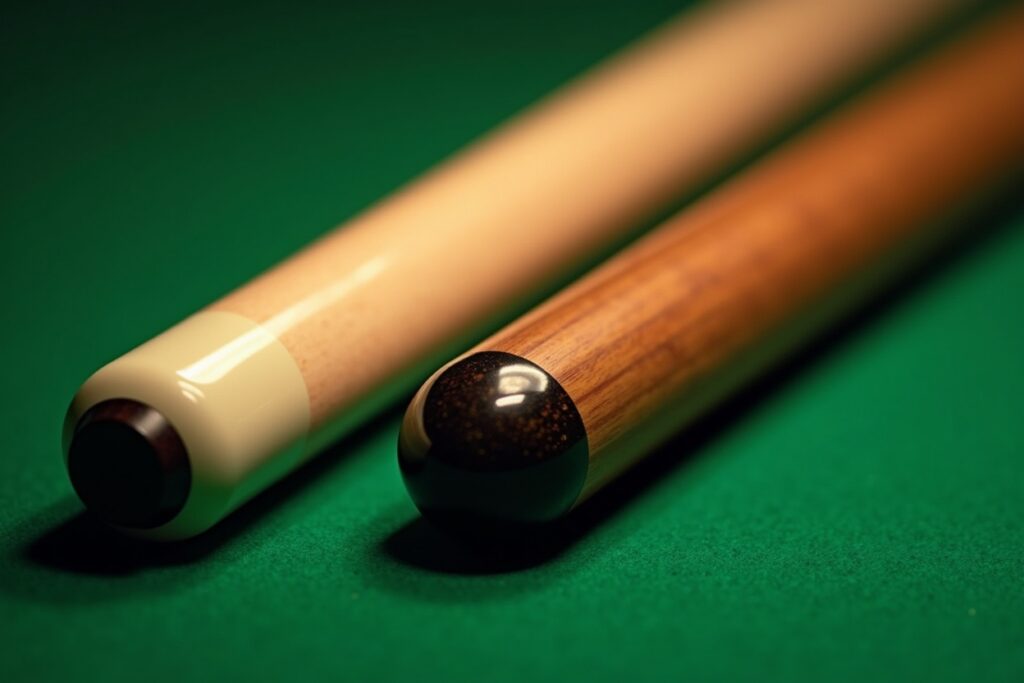This post contains affiliate links. We may earn a commission if you purchase through our links, at no extra cost to you.
Last Tuesday night at league, I forgot my cue. Left it in the garage. Grabbed a fiberglass house cue off the wall rack.
Big mistake.
First game, I couldn’t feel anything. The shaft felt dead in my hands. Couldn’t tell if I was hitting center ball or three tips off. Lost that rack in eight minutes.
Walked out to my car between matches. Got my maple cue. Won the next three games straight.
That’s when I realized most league players don’t understand how much cue material actually matters. Not just for feel—for your entire game.
I’ve been playing APA for 11 years now. Tested probably 20 different cues. Here’s what I’ve learned about wood vs. fiberglass that actually matters for regular players like us.
What You’re Actually Choosing Between
Wood Cues (What Most Serious Players Use)
The woods you’ll see:
- Maple: What 90% of league cues are made from. Dense, consistent, good feedback.
- Ash: Traditional English wood. Bit more flex than maple. Some players love it.
- Exotic stuff: Cocobolo, ebony, rosewood. Mostly decorative in the butt section.
Wood cues are carved from solid hardwood. The shaft is always one piece (or laminated strips for stability). They turn it on a lathe, sand it smooth, seal it.
That’s it. Simple. Traditional. Works.
Fiberglass Cues (What Bars Stock)
Fiberglass cloth wrapped around a core (usually wood or foam). They soak it in resin, cure it under heat, and you get a shaft that won’t warp no matter what you do to it.
Where you’ll find these:
- Every bar and pool hall house cue
- Break cues (take abuse well)
- Budget beginner sets under $40
- Outdoor tables
Why Wood Works Better for League Play
The Feel Difference Is Real
This is where wood completely dominates. I’m an APA 7. When I hit with my maple cue, I feel:
- Exactly where the tip contacts the cue ball
- How much the tip compresses
- The ball’s response
- Energy transferring up the shaft
That feedback taught me proper stroke mechanics. Every Tuesday night, that feel tells me instantly when I’m hitting wrong.
Fiberglass? Dead. Zero vibration. Like shooting with a broomstick. I can’t develop touch with fiberglass.
My teammate switched from a $35 fiberglass cue to a $120 maple cue last season. His APA skill level went from 5 to 6 in four months. Same player. Different cue. Better feedback.
How They Actually Perform
Hit Quality:
Wood transmits energy cleaner. Less vibration loss. More power to the ball. On my bar table with worn cloth, that efficiency matters.
Control:
Subtle changes in grip pressure, stroke speed, follow-through—they all matter more with wood. Better players (APA 6+) love this responsiveness. Beginners sometimes struggle with it.
Consistency:
Quality maple performs the same Tuesday after Tuesday. Heat doesn’t matter. Humidity doesn’t matter much. Altitude doesn’t matter.
Spin Generation:
Wood generates english better. The shaft flexes slightly on impact. That flex helps spin. I noticed this most on draw shots—my wooden cue draws 12-18 inches more than the same shot with fiberglass.
What Wood Costs (Real Numbers)
Budget Wood ($30-$80):
- Lower-grade maple
- Basic design
- Standard tip
- Maybe 90-day warranty
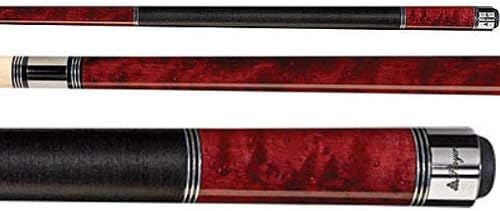
Players C-960 Cue – Solid first wood cue for $65. I recommended this to three teammates. All three are still using them two years later.
Mid-Range Wood ($80-$250):
- Select hardrock maple
- Better tip (Elk Master or similar)
- Decorative inlays
- Better craftsmanship
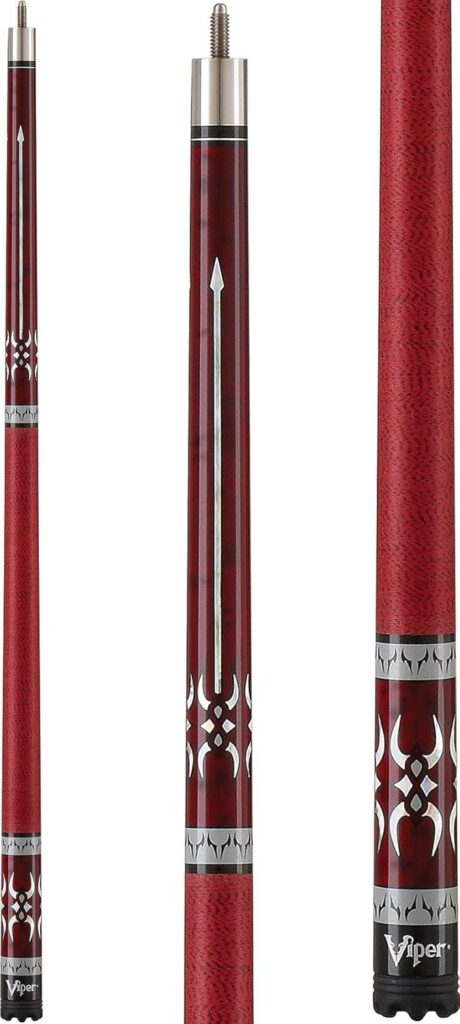
Viper Sinister Series – Best value I’ve found. $90. Plays like cues twice the price.
Premium Wood ($250-$500):
- AAA-grade maple
- Pro tips (Kamui, Tiger)
- Exotic wood inlays
- Precision joint
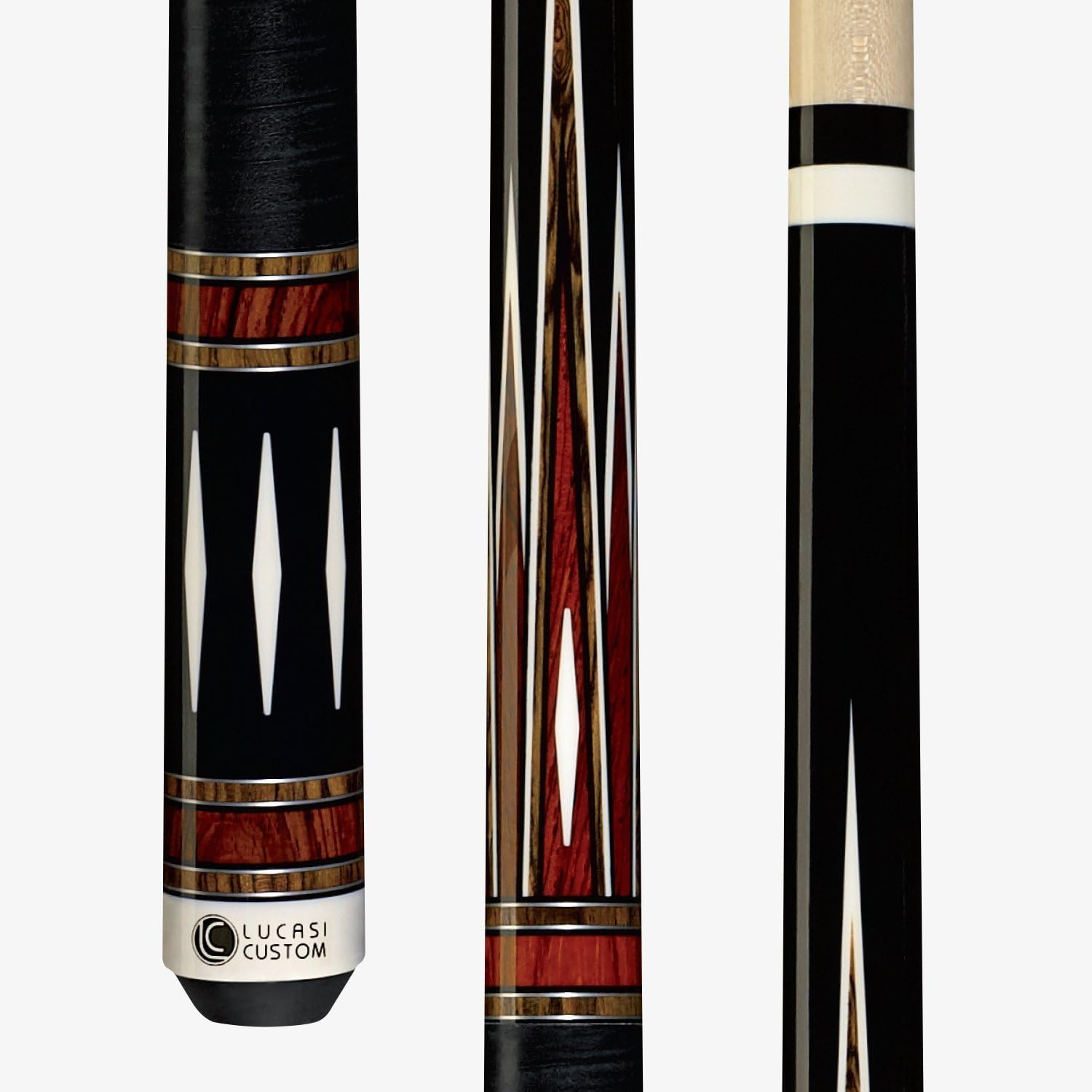
Lucasi Custom LZC39 – Tournament quality. This is what the APA 8-9 players on my team use.
Pro/Custom ($500-$5,000):
- Matched grain
- Custom specs
- Hand-selected wood
- Artisan work
Meucci cues and Predator – If you’re playing at Fargo 650+ level. Otherwise save your money.
Why Wood Wins
Feel:
Nothing comes close. Essential if you want to improve past APA 5.
Skill Development:
Forces proper technique. Can’t hide stroke flaws with a quality wood cue.
Tournament Standard:
Every BCA and APA tournament I’ve played—everyone’s using wood shafts. Specifically maple.
Resale Value:
My $280 Predator shaft is worth $160 four years later. Try selling a used fiberglass cue.
Aesthetics:
Beautiful grain patterns. Natural wood warmth. Looks professional.
Spin:
Generates english better than fiberglass. Noticeable difference on position play.
The Wood Downsides (Be Honest)
Maintenance:
- Wipe down after every session
- Check for warping monthly
- Condition quarterly
- Store in climate control
I spend maybe 5 minutes a month maintaining my cue. Not a big deal if you care about your equipment.
Warping Risk:
I’ve warped two cues. One left in my hot car during summer league. One stored in my damp basement. Both were $150+ mistakes.
Roll your cue on the table before every match. If it wobbles, it’s warped. Game over.
Durability:
Wood can crack, chip, dent. I dropped my first quality cue getting out of my car. $200 down the drain.
Price:
Quality maple starts around $80. Fiberglass quality starts around $30. That $50 difference matters to some players.
Why Fiberglass Works for Some Situations
Durability Is Unmatched
I’ve seen bar owners abuse fiberglass cues for years. Dropped. Used as walking sticks. Left outside overnight. Still shoot straight.
Advantages:
- Won’t warp (humidity doesn’t matter)
- Can’t crack or split
- Almost zero maintenance
- Temperature extremes don’t affect it
Bar owners love fiberglass because drunk players can’t destroy them.
Performance Reality (I’ll Be Honest)
Fiberglass doesn’t perform like wood for serious play. Period.
Feel:
Dead. Minimal feedback. Like shooting with an aluminum pipe.
Hit:
Power transfer is adequate. But less efficient than wood.
Control:
Less responsive to technique changes.
Spin:
Generates english, but not as effectively.
For beer league casual games? Fine. For skill development past APA 5? Limiting.
What Fiberglass Costs
Budget Fiberglass ($15-$40):
- Basic construction
- Plastic ferrule
- Plastic tip
- No warranty
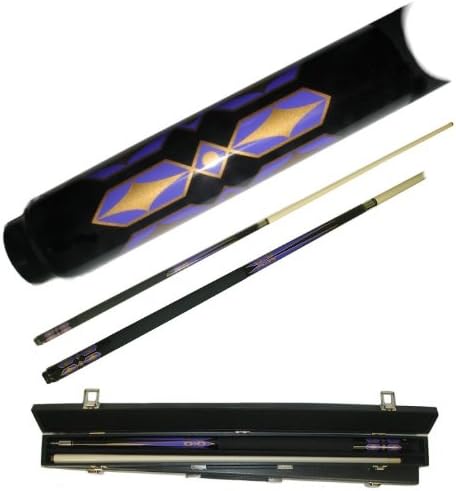
Trademark Black Diamond Fiberglass Cue – Typical bar cue. $25. Does the job.
Mid-Range Fiberglass ($40-$100):
- Better construction
- Improved tip
- Decorative wraps
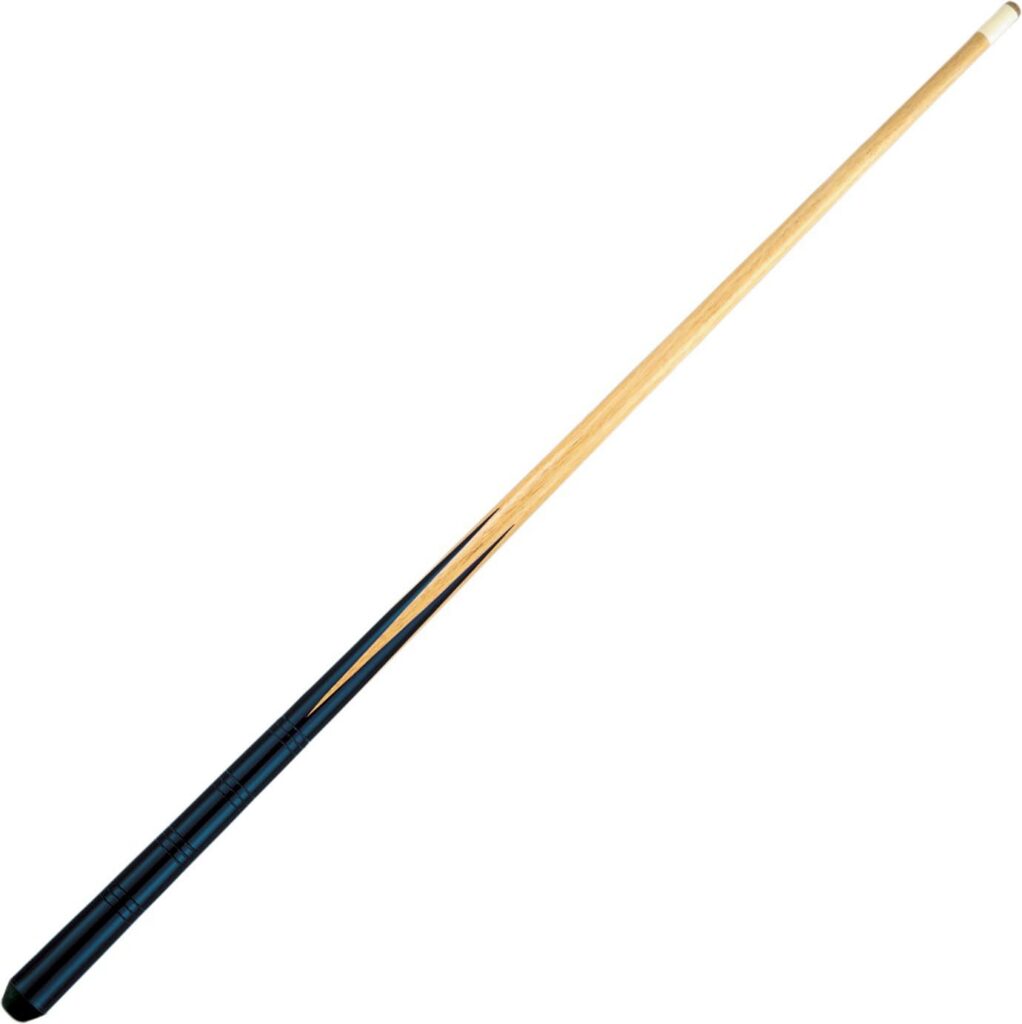
Viper Commercial 1-Piece Hardwood – What quality bars stock. $50. Lasts 5+ years.
Premium Fiberglass ($100-$200):
Rare. At this price, buy wood instead.
Fiberglass Advantages
Indestructible:
Leave it anywhere. Store it however. Still shoots straight.
Low Maintenance:
Wipe it down occasionally. That’s it.
Climate Independent:
Doesn’t care about humidity, temperature, or altitude. Perfect for garage tables.
Affordable:
Quality house cues cost $40-60. Last 10+ years.
House Cue Perfect:
If you run a bar or pool hall, fiberglass is the only choice.
Fiberglass Disadvantages
Poor Feel:
Can’t develop touch. Dead feedback.
Limited Performance:
Fine for casual play. Not for improving past APA 5.
No Resale Value:
A $50 fiberglass cue sells for maybe $5 used. If you can sell it at all.
Not Tournament Appropriate:
You won’t see fiberglass in professional competition. Or even BCA regionals.
Head-to-Head: What Actually Matters
| Feel and Feedback | Wood: Exceptional. Feel every nuance. Fiberglass: Dead. Minimal feedback. Winner: Wood (not close) | Durability | Wood: Can warp, crack, chip. Fiberglass: Nearly indestructible. Winner: Fiberglass |
| Maintenance | Wood: Regular care required. Fiberglass: Almost none. Winner: Fiberglass | Performance | Wood: Superior transfer, spin, control. Fiberglass: Adequate for casual play. Winner: Wood |
| Skill Development | Wood: Teaches proper technique through feedback. Fiberglass: Dead feel limits learning. Winner: Wood | Price | Wood: $80+ for quality. Fiberglass: $30-60. Winner: Fiberglass |
| Resale Value | Wood: Retains 40-60% of value. Fiberglass: Minimal market. Winner: Wood |
Why Maple Specifically
When league players say “wooden cue,” they mean hard rock maple. Here’s why:
Density:
Tight grain. Consistent throughout the shaft.
Stiffness:
Proper flex without being whippy. Predictable.
Durability:
Hardest practical cue wood. Resists dents from bar table abuse.
Availability:
North American hardrock maple is abundant. Keeps costs reasonable.
My playing cue: maple. My practice cue: maple. My break cue: maple. I’ve tried ash, exotic woods, fiberglass. Always return to maple.
Predator 314-3 Shaft is maple done right. $300. Worth it if you’re playing APA 7+.
When to Choose Wood (League Player Perspective)
You’re serious about improving:
If you’re in APA or BCA, wood is mandatory. You need that feedback to develop.
You play weekly:
Regular players benefit most from quality equipment. That’s you.
You have climate control:
Can you store your cue indoors? Wood performs beautifully.
You’re investing long-term:
Quality wood lasts decades. My teammate’s 15-year-old McDermott still plays perfect.
You’re playing tournaments:
Match your practice cue to competition standards.
When to Choose Fiberglass
House cues only:
Bars and pool halls need indestructible options.
Extreme conditions:
Garage table? Outdoor table? Variable climate? Fiberglass doesn’t care.
Break cues:
Some players prefer fiberglass break cues. Abuse resistance matters here.
Budget constraints:
Need a cue today under $50? Fiberglass delivers.
Casual play only:
Play once a month with buddies? Fiberglass works fine.
Carbon Fiber: The Premium Alternative
Worth mentioning because three players on my team switched this season.
Performance:
Feels like wood. Same energy transfer. But won’t warp.
Price:
$300-$800 for just the shaft. Serious investment.
Pros:
- Wood-like feel
- Fiberglass durability
- No warping ever
- Low deflection
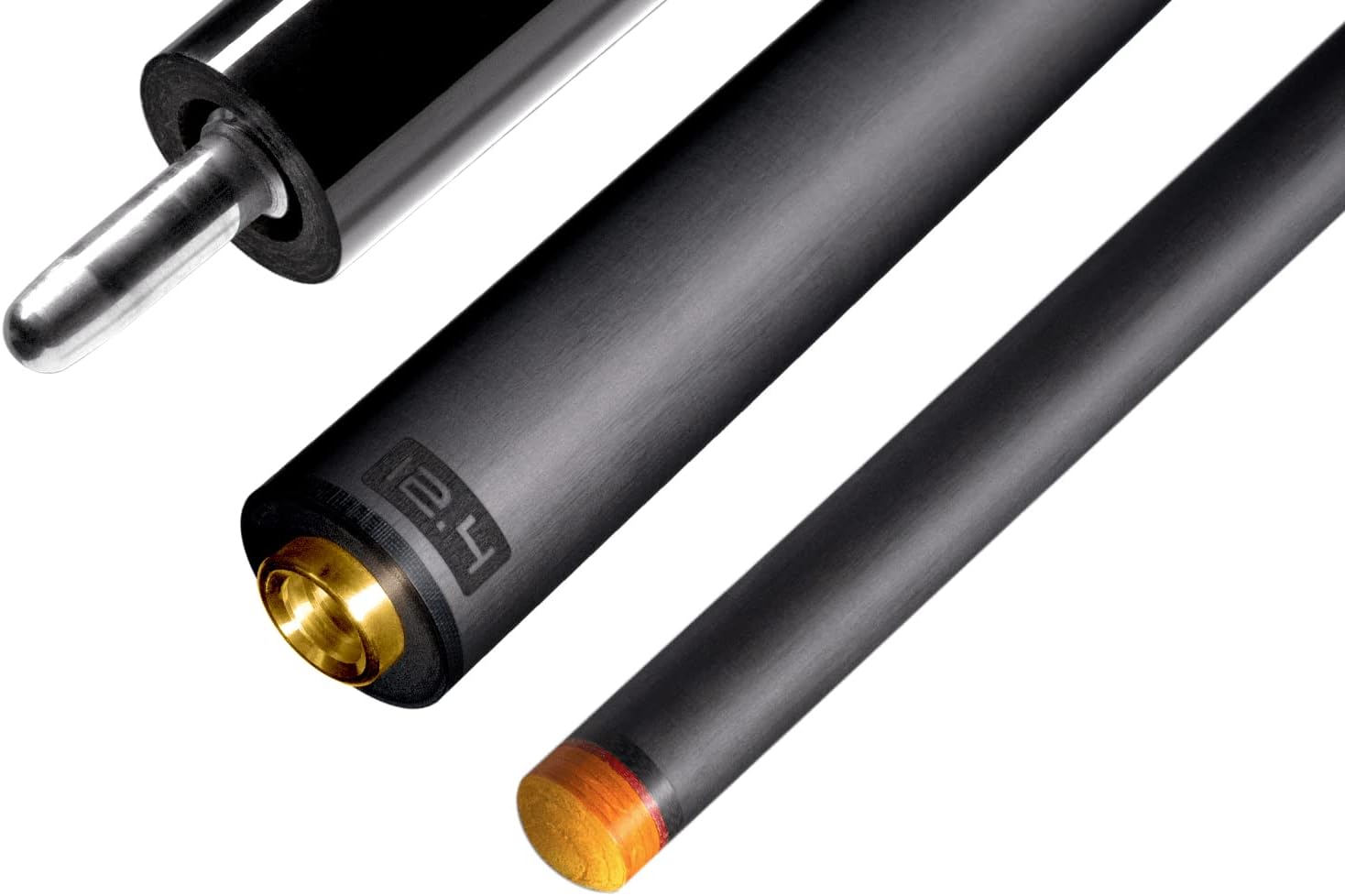
Predator REVO Carbon Shaft – Industry leader. $500.
I haven’t switched yet. My $150 maple plays perfect. But carbon fiber is legit technology for players with bigger budgets.
Real Cost Over Time (League Player Math)
| Budget Fiberglass: 5 Years | Quality Wood: 10 Years | Premium Wood: 20 Years |
| Initial | Initial | Initial |
| Cue: $40 Case: $25 Total: $65 | Maple cue: $200 Case: $50 Supplies: $30 Total: $280 | Predator cue: $500 Premium case: $120 Supplies: $50 Total: $670 |
| 5-Year Costs: | 10-Year Costs | 20-Year Costs |
| Tip replacement: $20 Cleaning: $0 Total: $85 | Tips (3x): $60 Refinishing: $40 Conditioning: $30 Total: $410 | Tips (6x): $180 Refinishing (2x): $80 Maintenance: $100 Total: $1,030 |
| Resale: $5-10 | Resale: $100-120 | Resale: $200-250 |
| Net Cost: $75-80 over 5 years | Net Cost: $290-310 over 10 years | Net Cost: $780-830 over 20 years |
| Per year: $15-16 | Per year: $29-31 | Per year: $39-41.50 |
What I Actually Use (Real League Player Setup)
Playing Cue:
Lucasi Custom LZC39 – $250. Maple shaft. Perfect feel. Been using it for three seasons. Won two division championships with it.
Break Cue:
Viper Graphstrike Break Cue – Carbon fiber. $85. Takes abuse. I break hard. This cue survives.
House Cues (for guests):
Four cues from Viper commercial series. Fiberglass. $45 each. Indestructible. Friends who visit can’t destroy them.
Wood for serious play. Fiberglass for utility.
Common Mistakes I See Every Week
Buying fiberglass to “learn on”:
You won’t develop proper feel. You’ll hit a ceiling around APA 5.
Storing wood cues wrong:
Hot car. Damp basement. Direct sunlight. All warp wood. Store indoors.
Neglecting maintenance:
Wipe your cue after each session. Takes 30 seconds. Extends life by years.
Overpaying for fiberglass:
Never pay $100+ for fiberglass. At that price, buy wood.
Using warped cues:
Roll your cue on the table before playing. Warped cue ruins accuracy. I see this every Tuesday.
My Actual Recommendations (By Budget)
Starting Out, Under $100:
Players C-960 Maple Cue – $65. Real wood. Decent quality. Good first cue.
Serious Player, $150-300:
Viper Sinister Series or Lucasi Custom LZC39 – Quality maple. Proper construction. This is where you want to be for league play.
Advanced Player, $300-600:
Predator 314-3 Shaft – Professional grade. If you’re APA 7+ or playing BCA tournaments.
House Cues (if you have home table):
Viper Commercial Grade – $45 each. Buy 4-6. Let guests abuse them.
Break Cue:
Fiberglass ($60-80) or dedicated break cue ($150-300). I prefer fiberglass break cues. They survive.
Maintenance: What I Actually Do
Wood Cue Care (My Actual Routine)
After Each Tuesday Night:
- Wipe shaft with microfiber cloth (30 seconds)
- Check tip condition
- Put it in the case
Monthly:
- Roll cue on table to check for warping
- Check ferrule for cracks
- Clean joint pin with cotton swab
- Deep clean shaft with Tiger Crystal Cue Shaft Cleaner
Every 3-4 Months:
- Condition wood if needed
- Replace tip if worn
- Check for loose joint
Total time: Maybe 5 minutes per month.
Fiberglass Cue Care
After Session:
Wipe down if it’s dirty.
Monthly:
Clean if visibly dirty.
That’s it.
Your Decision Framework (Real Talk)
| Choose Wood if: | Choose Fiberglass if: | Choose Carbon Fiber if: |
| You play weekly or more You’re serious about improving You can store it properly Budget allows $80+ You value feedback | You play monthly or less You need indestructible Variable storage conditions Budget under $60 Commercial use | You’re APA 7+ or BCA B+ You want wood feel + fiberglass durability Budget allows $500+ You play in varying conditions |
Bottom Line for League Players
I’m an APA 7. Been playing Tuesday nights for 11 years. Here’s what I tell new league players:
If you’re serious about improving past APA 5, buy wood. The feedback will teach you proper stroke mechanics faster than anything else.
If you’re casual (play once a month with buddies), fiberglass works fine. Save the money.
If you’re competitive (APA 6+, playing tournaments), invest in quality maple. You’ll notice the difference immediately.
The feel difference is real. The performance difference is real. The skill development difference is real.
That Tuesday night when I forgot my cue taught me more about equipment than three years of reading reviews online.
Wood for serious play. Fiberglass for everything else.
Prices and availability accurate as of January 2025. As an Amazon Associate, we earn from qualifying purchases.

